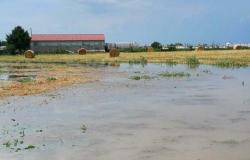
At the dawn of the summer season, the first swims in the sea began. And while diving in Calabria, a fisherman had an unusual encounter: a fish that moved sinuously, streaked with white and orange, with long, menacing spines extended in its defense. He uploaded the photo to a Facebook page asking if it was a lionfish. The confirmation came from Ernesto Azzurro, marine biologist at the Cnr. Yes, it is a scorpion fish, native to the Red Sea, which has a very painful sting for humans. TO Republic, the expert explains: «The spread of invasive species shows no signs of slowing down. It is one of the most pressing impacts of climate change.” In fact, the Mediterranean has seen the temperature of its waters increase by 0.88°C compared to the average of 1850-1900, underlines the WWF. And the lionfish, one of the most invasive animals in the world, although edible, risks causing unpleasant injuries if its spines come into contact with the skin during a swim.
«Watch out for those four»
To spread greater awareness about these new species, the Cnr and Ispra have started a campaign entitled Watch out for those four. The other three specimens that are spreading in our seas are the dark rabbitfish, the striped rabbitfish – both are covered in stinging spines – and the most dangerous, the spotted pufferfish. If eaten it can even be fatal, as the neurotoxin it contains is resistant to cooking. Last week, Azzurro says, a spotted pufferfish was caught in Istria. While the WWF points out that over a thousand exotic marine species have now been introduced into the Mediterranean, and 75% have now settled permanently.
Lakes and rivers
Not just salt water: lakes and rivers are also victims of these invasions. For example, the spread of the apple snail, native to South America, is of concern: a threat to crops in humid environments, such as rice fields in Northern Italy. The voracious snail also arrived in South-East Asia some time ago, where the local population has become accustomed to eating it. A sort of defense against its proliferation, a bit like the Italians have learned to do with the blue crab, now a fixed presence on many menus, which wholesale costs no more than 3 euros per kilo and which in some cases is used also to flavor craft beer. There is, however, the problem that many of these alien species do not have a predator in the places where they settle and man cannot always play this role.
The spread of native species
People will certainly not be able to feed on the wormworm, that long marine earthworm covered in stinging hair that has been talked about a lot in recent weeks. But which, in reality, is not exactly an alien species. «It is a native animal of our seas, but in recent years it has become abundant and has expanded into new areas, probably due to the increase in heat. It is voracious and devours, among others, corals and gorgonians”, argues Azzurro, again a Republic. The worm dog is a danger for divers, but also for fishermen who can get stung by pulling up the nets with their bare hands.
«Swimmers can rest assured – adds the CNR expert – it is rare to find it on the sand, at shallow depths». The WWF also reports this: warming of the seas is also a problem due to the spread of some native species that are harmful to the economy and people. Like jellyfish, which persist for increasingly longer periods. But in the latter case, the responsibility also lies with the fishermen: “Overfishing has led to the disappearance of their predators.” Now, in the nets, they risk finding more jellyfish than fish.





